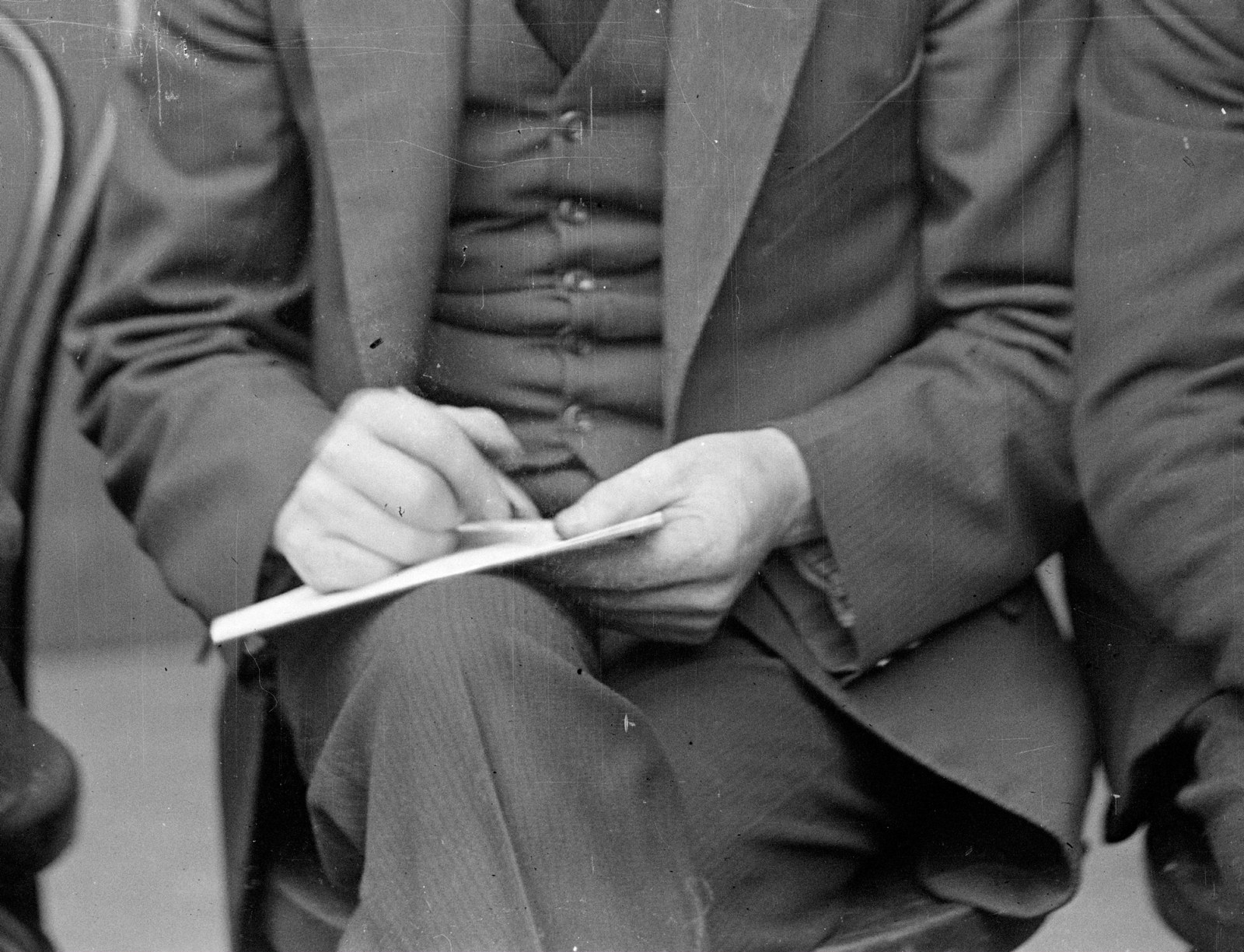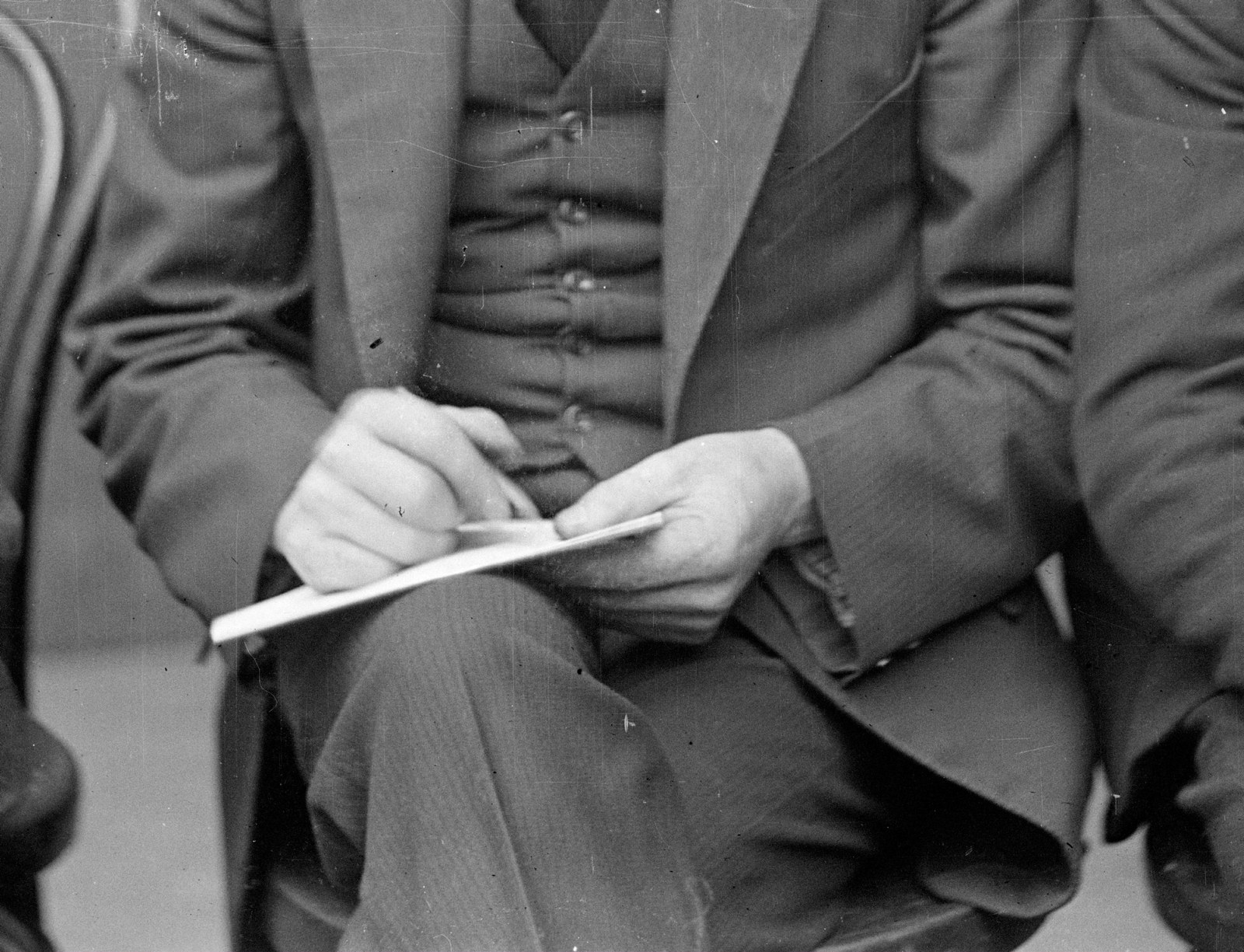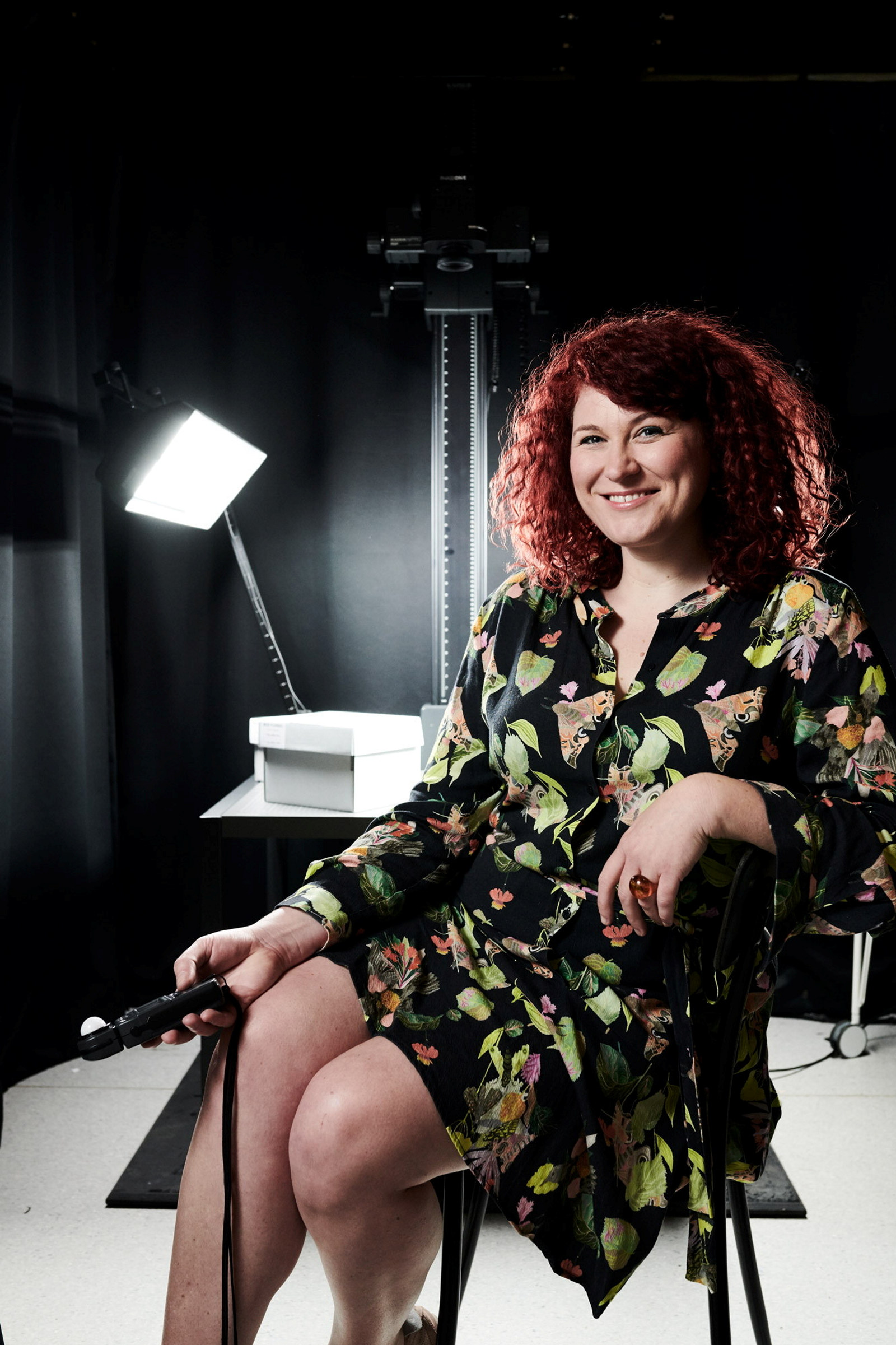Channelling the police photographer
Captured on glass Part 1
As part of a workshop with Ellie Young at Gold Street Studios in Trentham, Victoria, I had the opportunity to take my own photographs using dry glass plate negatives. During the workshop I used modern view cameras to expose the dry plates that I’d hand coated and later processed.
Channelling the police photographer, I set up my modern large-format view camera out in the sun-drenched garden. The shaded verandah was the perfect spot to re-create my own version of a Special photograph. The long lens focal length meant the subject needed to be a distance away to appear in focus. I adjusted the front and rear panels to manually focus the image on the back of the camera ground glass and then, using a digital light meter, took a reading to determine the required shutter speed and aperture for a correct exposure. After I’d inserted the plate holder into the camera, Ellie kindly clicked the shutter to create a latent image on my handmade plate. The plate was ready to be processed.
Because of the low light sensitively of the emulsion, both of the photographs I took required slow exposures of between one to two seconds. I was unable to remain still enough over the time the shutter was open to achieve a sharp image on the negative. This issue of focus/ sharpness was further complicated as when the plate holder is inserted into the view camera the photographer can no longer check image focus point and position of the the sitter within the frame - this view is blocked by the plate holder.
My experience with the view camera – slow emulsion, uncontrollable available lighting, darkroom processes and moving subjects – all reflect the practice of the police photographer at work on the Specials in the 1920s. This era of photographic technology would have also necessitated exposures from less than a second to a few seconds. Much longer than the split second exposure taken on digital cameras of today.
The police photographer would have had to gain the suspect’s participation to take the right position and remain in the camera’s focus point, working quickly to execute his portraits before sunlight falling on the subject changed. Given the many challenges involved in capturing these images, including the unpredictability of the subjects, the technical and aesthetic quality of these New South Wales Police images is all the more remarkable.
Captured on glass

Underworld
Captured on glass
It’s almost 100 years since New South Wales police used glass-plate negatives to photograph suspects in custody. These negatives are a direct link to that moment in time, and provide evidence about photographic technology and methods in the 1920s

Underworld
Photography with slow emulsions
Many of the Special photographs show evidence of long exposures where sitters have moved during the exposure time, causing a blur in the final image. This is probably in part due to the slow emulsions on the dry plates used to produce these photographs

Underworld
Creating glass plate negatives
Photography practitioners today are rediscovering historical, analogue photography processes

Underworld Blog
Descend into Sydney’s seedy underworld with our blog. Discover exclusive stories, never-before-seen images, and behind-the-scenes insights
Published on
More Underworld

Underworld
Behind the scenes: How to read a ‘special’
Around the world, police forces followed established conventions when taking mugshots. But Sydney police in the 1920s did things differently

Underworld
Nerida Campbell Joins Studio 10
Today Underworld curator Nerida Campbell joined Studio 10 to share her insights into the captivating exhibition mugshots

How the Specials inspired singer Russell Morris
Inspired by the enigmatic police photograph of Sydney swindler Thomas “Shark Jaws” Archer (alias Thomas Sweeney, Thomas Everet), celebrated Australian musician Russell Morris wrote his hit blues and roots song Sharkmouth

Underworld
Barbara Turner Taylor: Plotter
Described by police as the cleverest magswoman and confidence trickster in New South Wales, Barbara Turner Taylor was a master in manipulation
